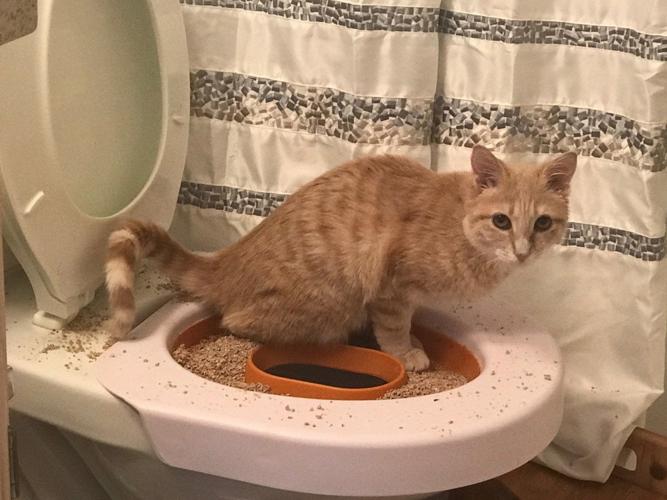The Risks of Flushing Cat Poop in Your Toilet - Preventive Steps
The Risks of Flushing Cat Poop in Your Toilet - Preventive Steps
Blog Article
On this page below you will find lots of great expertise relating to How to Dispose of Cat Poop and Litter Without Plastic Bags.

Introduction
As cat proprietors, it's important to be mindful of just how we throw away our feline pals' waste. While it might seem hassle-free to flush pet cat poop down the commode, this technique can have damaging consequences for both the atmosphere and human wellness.
Environmental Impact
Purging pet cat poop introduces damaging virus and parasites into the water system, posturing a significant danger to water ecological communities. These contaminants can negatively impact marine life and compromise water high quality.
Health Risks
Along with environmental worries, flushing feline waste can likewise pose health threats to human beings. Pet cat feces may include Toxoplasma gondii, a parasite that can cause toxoplasmosis-- a potentially extreme ailment, especially for expecting females and individuals with weakened body immune systems.
Alternatives to Flushing
Fortunately, there are safer and much more liable ways to take care of pet cat poop. Think about the following options:
1. Scoop and Dispose in Trash
One of the most typical approach of dealing with feline poop is to scoop it right into a naturally degradable bag and throw it in the trash. Make sure to use a committed litter scoop and throw away the waste promptly.
2. Use Biodegradable Litter
Go with eco-friendly cat litter made from products such as corn or wheat. These clutters are eco-friendly and can be securely dealt with in the garbage.
3. Bury in the Yard
If you have a lawn, take into consideration hiding feline waste in an assigned area far from vegetable yards and water sources. Make sure to dig deep enough to avoid contamination of groundwater.
4. Mount a Pet Waste Disposal System
Buy a pet garbage disposal system particularly made for pet cat waste. These systems utilize enzymes to break down the waste, reducing smell and environmental effect.
Conclusion
Accountable animal ownership prolongs beyond offering food and sanctuary-- it also entails correct waste administration. By avoiding flushing feline poop down the commode and opting for alternative disposal methods, we can minimize our environmental footprint and shield human wellness.
Why Can’t I Flush Cat Poop?
It Spreads a Parasite
Cats are frequently infected with a parasite called toxoplasma gondii. The parasite causes an infection called toxoplasmosis. It is usually harmless to cats. The parasite only uses cat poop as a host for its eggs. Otherwise, the cat’s immune system usually keeps the infection at low enough levels to maintain its own health. But it does not stop the develop of eggs. These eggs are tiny and surprisingly tough. They may survive for a year before they begin to grow. But that’s the problem.
Our wastewater system is not designed to deal with toxoplasmosis eggs. Instead, most eggs will flush from your toilet into sewers and wastewater management plants. After the sewage is treated for many other harmful things in it, it is typically released into local rivers, lakes, or oceans. Here, the toxoplasmosis eggs can find new hosts, including starfish, crabs, otters, and many other wildlife. For many, this is a significant risk to their health. Toxoplasmosis can also end up infecting water sources that are important for agriculture, which means our deer, pigs, and sheep can get infected too.
Is There Risk to Humans?
There can be a risk to human life from flushing cat poop down the toilet. If you do so, the parasites from your cat’s poop can end up in shellfish, game animals, or livestock. If this meat is then served raw or undercooked, the people who eat it can get sick.
In fact, according to the CDC, 40 million people in the United States are infected with toxoplasma gondii. They get it from exposure to infected seafood, or from some kind of cat poop contamination, like drinking from a stream that is contaminated or touching anything that has come into contact with cat poop. That includes just cleaning a cat litter box.
Most people who get infected with these parasites will not develop any symptoms. However, for pregnant women or for those with compromised immune systems, the parasite can cause severe health problems.
How to Handle Cat Poop
The best way to handle cat poop is actually to clean the box more often. The eggs that the parasite sheds will not become active until one to five days after the cat poops. That means that if you clean daily, you’re much less likely to come into direct contact with infectious eggs.
That said, always dispose of cat poop in the garbage and not down the toilet. Wash your hands before and after you clean the litter box, and bring the bag of poop right outside to your garbage bins.
https://trenchlesssolutionsusa.com/why-cant-i-flush-cat-poop/

Do you enjoy more info about How to Dispose of Cat Poop and Litter Without Plastic Bags? Give feedback further down. We will be glad to see your thoughts about this content. In hopes that you come back again soon. Make sure you take the opportunity to promote this write-up if you enjoyed reading it. Thank you for your time. Visit us again soon.
Information Report this page